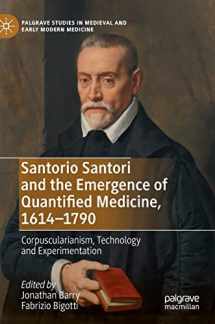
Santorio Santori and the Emergence of Quantified Medicine, 1614-1790: Corpuscularianism, Technology and Experimentation (Palgrave Studies in Medieval and Early Modern Medicine)
Book details
Summary
Description
This book examines the life and works of Santorio Santori and his impact on the history of medicine and natural philosophy. Reputed as the father of experimental medicine and procedures, he is also known for his invention of numerous scientific instruments, including early precision medical devices (pulsimeters, hygrometers, thermometers, anemometers), as well as clinical and surgical tools. The chapters in this volume explore Santorio's legacy through the seventeenth and eighteenth centuries. They highlight the role played by medical practitioners such as Santorio in the development of corpuscularian ideas, central to the 'new science' of the period, and place new emphasis on the role of the life sciences, chemistry and medicine in encouraging new forms of experimentation and instrument-making.
Chapters 1 and 2 are available open access under a Creative Commons Attribution 4.0 International License via link.springer.com.


We would LOVE it if you could help us and other readers by reviewing the book
Book review



